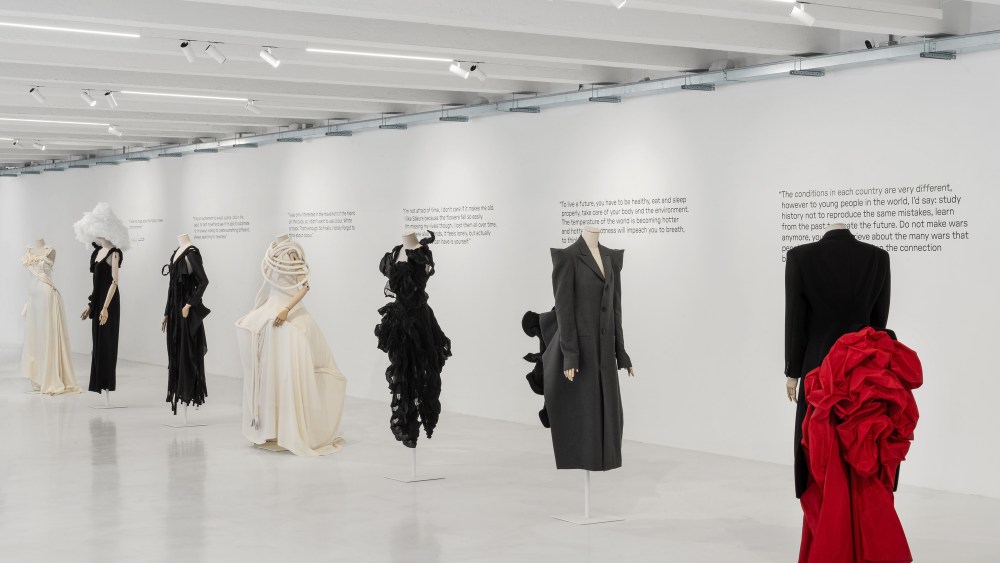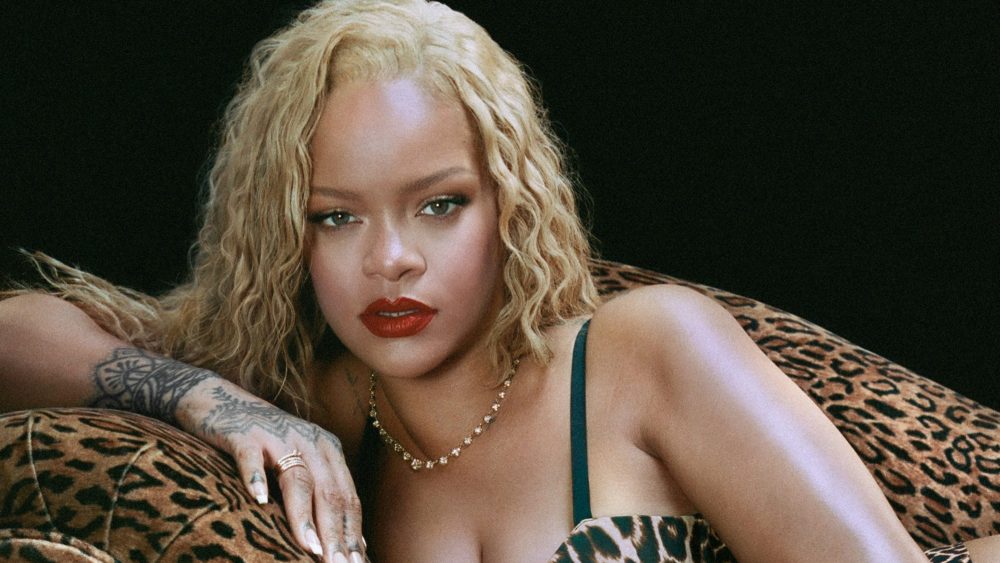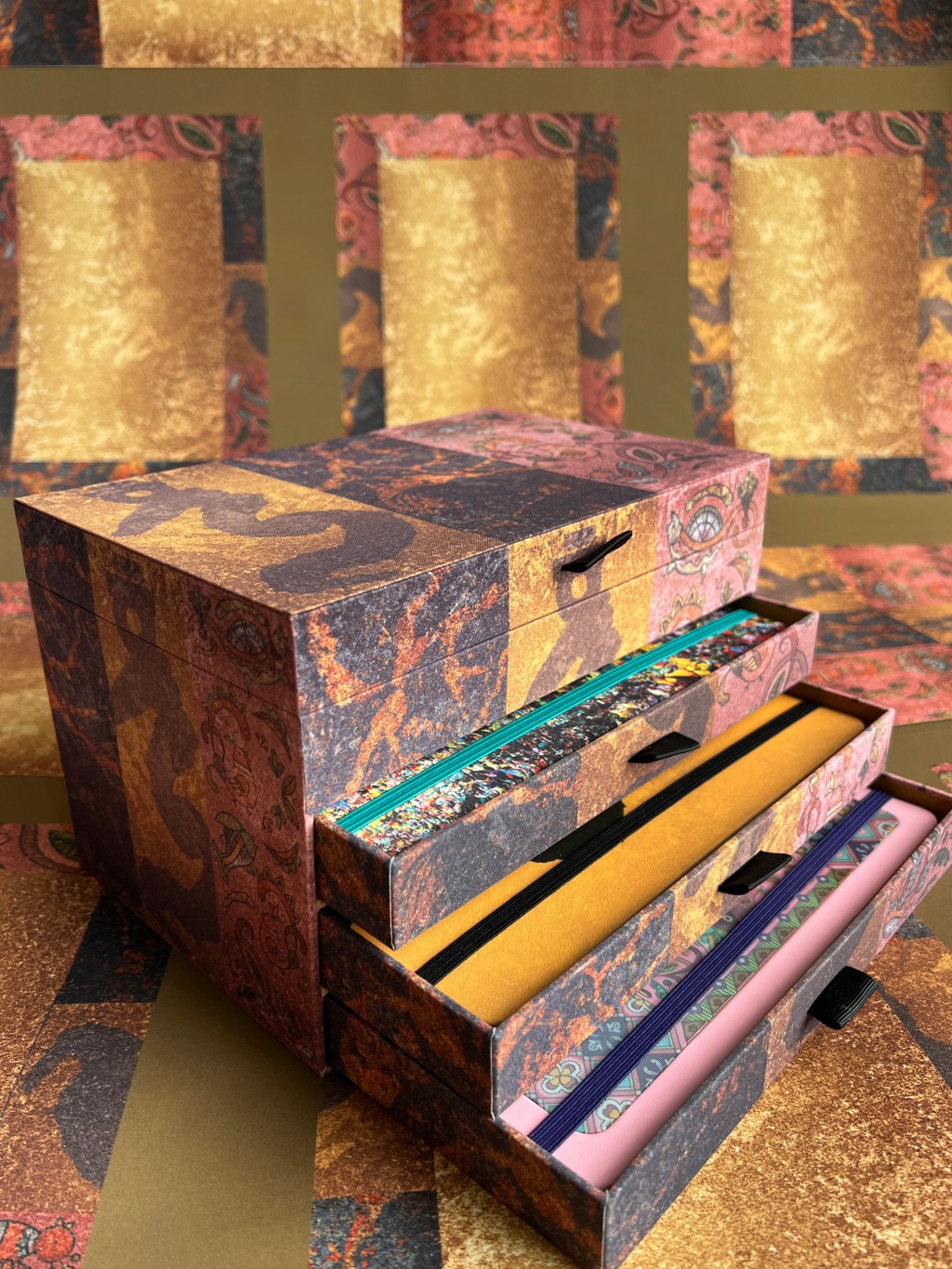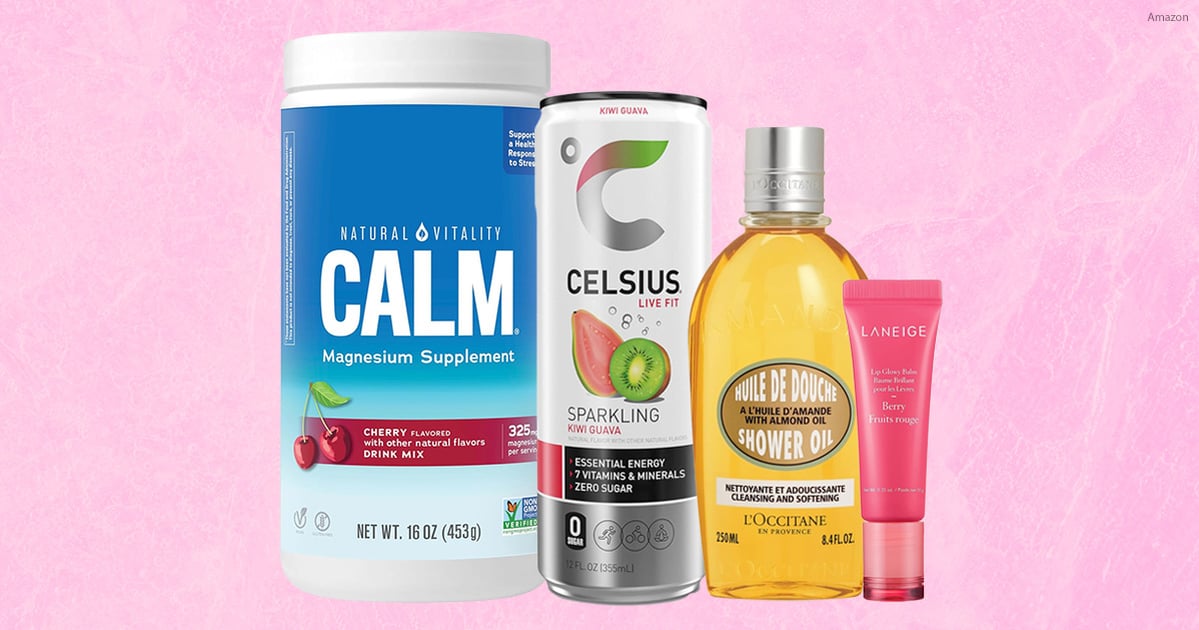MILAN — “Yohji Yamamoto dislikes the idea of a retrospective,” according to Alessio de’ Navasques, curator of the exhibition dedicated to the legendary Japanese designer at 10 Corso Como, which opened Thursday and runs until July 31.
De’ Navasques and Tiziana Fausti, owner of the Milan concept store, were careful to abide by Yamamoto’s wish to stage an exhibition that would emphasize atemporality.
“Yohji Yamamoto. Letter to the future” presents 25 archival and current garments from collections between 1986 and 2024 in the Galleria venue, one of the areas that has been revamped as part of the 10 Corso Como building’s complete makeover. With its industrial-looking environment, the luminous space contributes to the visual impact of Yamamoto’s signature and striking garments — mainly in black with touches of red.
Quotes by Yamamoto appear on the white walls behind the clothes, and one in particular addresses the use of color: “I was only interested in the movement of the fabric on the body, so I didn’t want to use color. White or black. That’s enough. So finally, I totally forgot to think about color.”
De’ Navasques, curator and lecturer of the Fashion Archives at La Sapienza University in Rome, said the title of the exhibition defines the designer’s “ambivalent and poetic relationship with time, in an asynchronous flow of forms, asymmetries and materials.”

In one of the quotes, Yamamoto states: “It is an excitement to revisit a piece I did in the past, to test myself and see if I’m able to sublimate it. I’m always looking to create something different, always searching for newness. I have no image about the future, I have only tomorrow.”
In the exhibition space, a Victorian red silk coat from the fall 1986 collection is displayed near a fall 2024 look shown in Paris last March — a gray wool coat with a tail. Styles from the fall 1996 collection, where felt was treated like origami, are shown with spring 1999 dresses, freed of layers of fabrics.
During a walk-through, De’ Navasques said the garments are not displayed chronologically but thematically, “in a dialogue between different eras, overcoming the concept of time. Since his early days until today, Yamamoto’s message is still vital and very powerful. He is one of the most extraordinary creators in the history of fashion.”
Fausti, who bought 10 Corso Como from founder Carla Sozzani in 2020, praised Yamamoto’s “pure intelligence and genius. I have always admired how he succeeds in offering volume and structure within the clean lines of Japanese culture in a unique way.”

Yamamoto, said De’ Navasques, “combines a sense of zen spirituality with the carnal and dramatic power of form. We are witnessing a historic moment in which, just as happened in his debut years in Europe, physicality seems to have freed itself from superstructures and gender stereotypes, yet we are overexposed, and continually judged, as happens on social media.”
The designer’s message “is instead that of the body acting on the garment, through its imperfect and welcoming forms, which encompasses every type of body and spirit.”
The curator underscored the fluidity of the shapes, how the designer “dismantled the Western silhouette, and the garment seems to breathe without the constraints of a predefined form. The body is freed and gives shape to the garment.”
He concluded by saying that with Yamamoto he was aiming to stage a “vibrant” exhibition. “Sometimes fashion exhibits can feel kind of dead, but the strength of his message allows a contemporary and experimental dialogue.” The designer’s insistence on “welcoming imperfection in every form, and draping and sculpting fabrics as recurring signature traits that have revolutionized the relationship between garment and person, are a universal message of timeless freedom that looks to the future.”
In some of his quotes, Yamamoto expressed his attention to the current times. “The conditions in each country are very different, however, to young people in the world, I’d say: study history not to reproduce the same mistakes, learn from the past to create the future. Do not make wars anymore, you should grieve about the many wars that people made, they have broken the connection between communities.”
Climate change was also top of mind: “To live a future, you have to be healthy, eat and sleep properly, take care of your body and the environment. The temperature of the world is becoming hotter and hotter, this hotness will impeach you to breathe, to think clearly.”
And while he admitted he is “not afraid of time, I don’t care if it makes me old. I like Sakura because the flowers fall so easily,” he wrote. “I’m missing my rivals though, I lost them all over time. They were also friends, it feels lonely, but actually the best rival you can have is yourself.”

Fausti proudly underscored that this is the first exhibition dedicated to Yamamoto in Italy after almost two decades.
In 2005, the “Correspondences” exhibition in Florence during Pitti Immagine Uomo displayed 90 outfits from the designer’s career at the Galleria d’Arte Moderna juxtaposed with the museum’s collection of artworks by the likes of Antonio Canova and Giovanni Dupré. This was followed by another at the Musée de la Mode et du Textile of the Louvre.
Previous exhibits were staged at the Victoria and Albert Museum in London in 2011. In 2016, the “Painting and Weaving Opportunity” exhibition featuring clothes, sculptures and art installations created by Yamamoto himself bowed in Tokyo.
Carla Sozzani founded 10 Corso Como in 1991 and since her takeover, Fausti has not only launched the structural renovation works, but also appointed Gianluca Borghi chief executive officer, tasking him with the expansion of the concept store brand worldwide.



